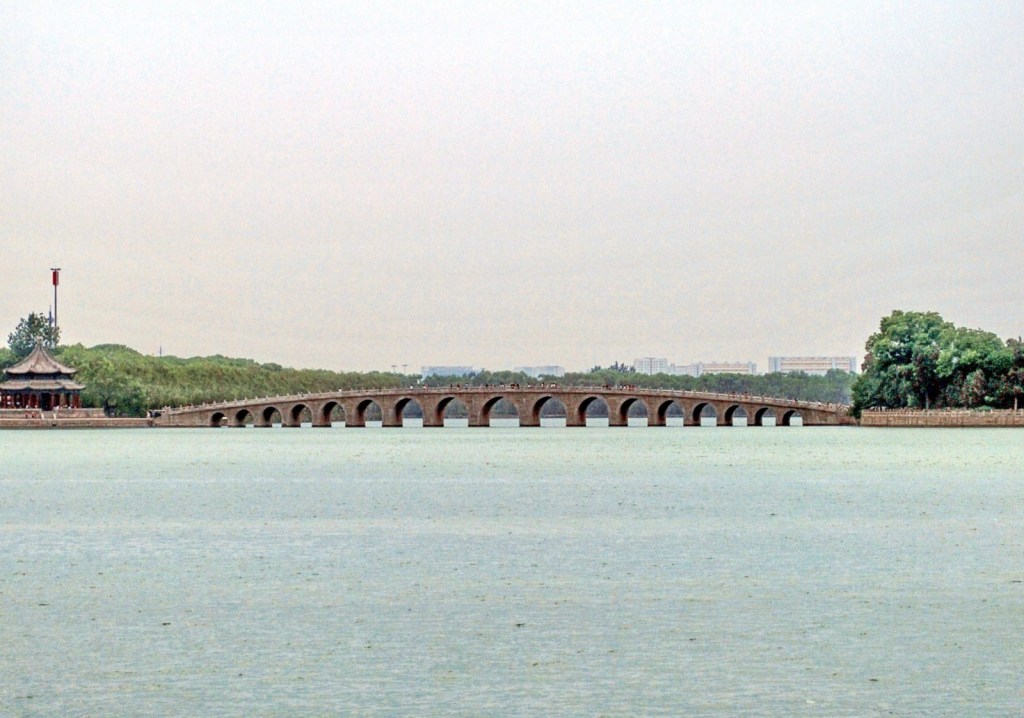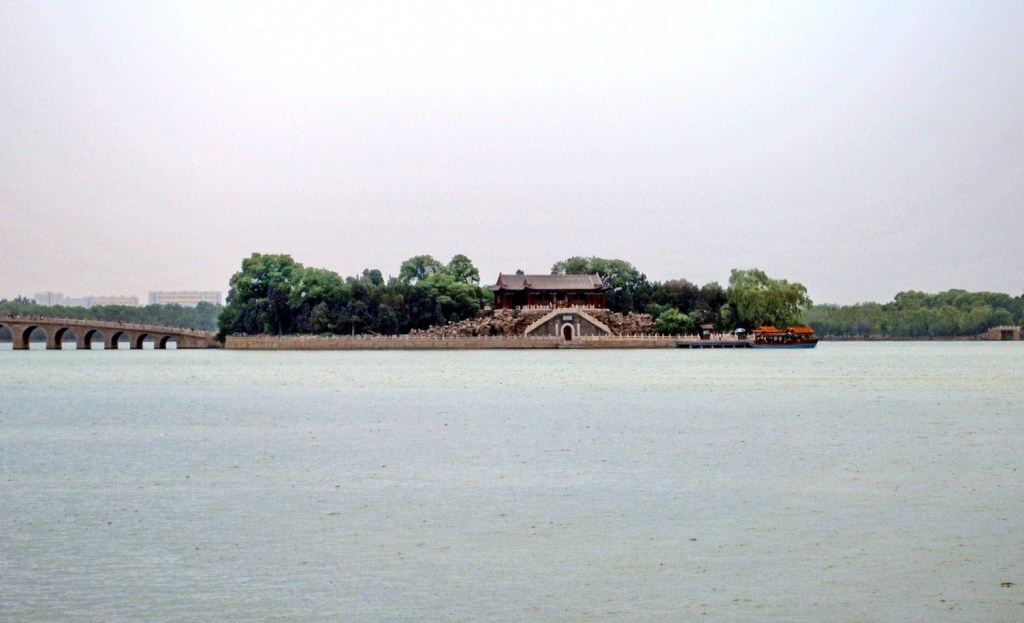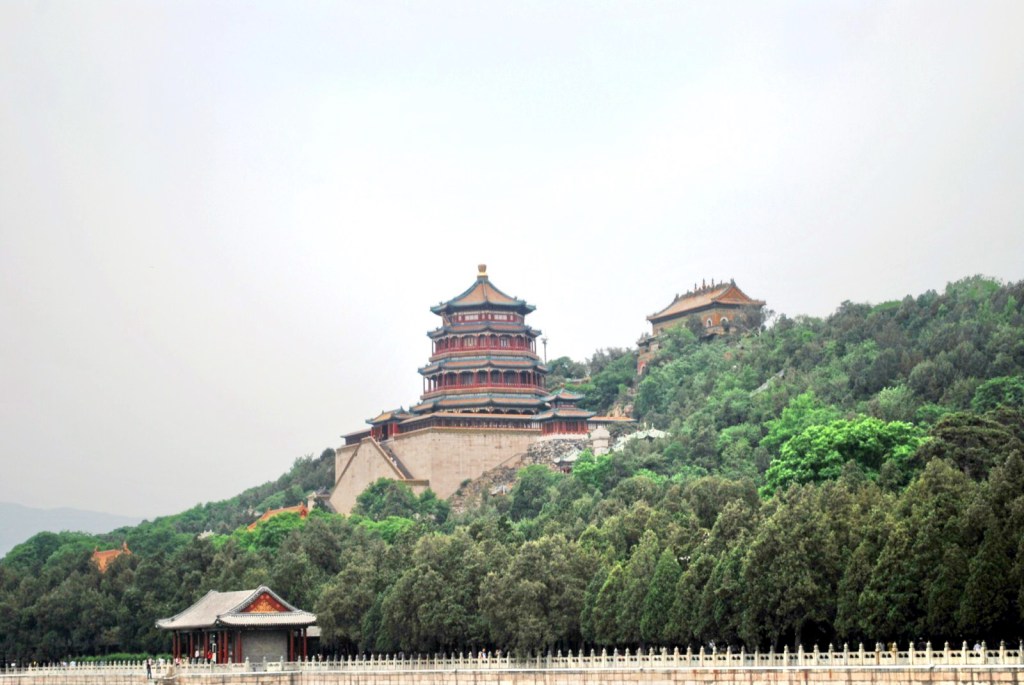From the Asian Games Panda House, we next proceeded to the Summer Palace, the largest and best-preserved imperial garden in China. The Summer Palace, located on the western edge of Beijing, between the fourth and fifth ring roads, 12 kms. from central Beijing, was, as its name implies, used as a summer residence by China’s imperial rulers. A pleasure ground in the countryside, yet near to the city, it is virtually a museum of traditional Chinese gardening that uses rocks, plants, pavilions, ponds, cobble paths and other garden styles to create a poetic effect between different scenes. Points of interest here are the Hall of Benevolence and Longevity and Kunming Lake.
The Hall of Benevolence and Longevity, the main hall of the Summer Palace, was first built in 1750 and was then called the Hall of Industrious Government, but the building was burnt down by the Allied Anglo-French Force in 1860. The present building was reconstructed in 1890 and the name of the hall was given by Emperor Guanxu. This is the most important hail for political activities in the Palace as it was the place for Emperor Guangxu and Empress Dowager Ci’xi to handle state affairs and receive foreign envoys.
Kunming Lake, covering ¾ of the area of the Summer Palace, is the most attractive water area in Beijing. Originally, it was a natural lake formed by a number of springs in the northwestern district in Beijing. During the Ming Dynasty (1368-1644), people grew lotus flowers in the lake and planted rice around the lake. Its picturesque beauty was often compared with the charming scenery around the West Lake. Even the emperors were fascinated with it and made boat trips on the lake. During the Qing Dynasty (1644-1911), in order to build Qingyi Garden, the Emperor Qianlong he had the lake expanded. He named it Kunming Lake in a way to praise its incomparable beauty.
The 150 m. long and 8 m. wide Seventeen-Arch Bridge, built during the reign of Emperor Qianlong (1711-1799), is the longest bridge in the Summer Palace. It connects the eastern shore of the lake and Nanhu Island in the west. Nanhu Island lies southeast of Kunming Lake opposite Longevity Hill. With an area of about 1 hectare (2.47 acres), it is the largest island in the Summer Palace. When Emperor Qianlong (1711-1799) enlarged Kunming Lake, he ordered workers to save the temples and buildings but to excavate the earth; thus creating Nanhu Island.
The octagonal, 3-storied and quadruple-eaved wood-constructed Pavilion of Buddhist Fragrance (FoXiangGe) is the highest and largest grand architecture in the Summer Palace. The 40-m. high tower is built on a 20-m. high stone terrace half way up the hill – hence it seems to touch the clouds and looks graceful and beautiful. This symbol of the Summer Palace can be seen for miles around.
A highlight of our visit here was our (Gil, Jandy, Gibson and me) photo ops dressed in complete and colorful Chinese emperor attire (RMB 10 each). Azon, on the other hand, dressed up as a frowning concubine. She did the same thing again at Kunming Lake, this time smiling. Our visit to the Summer Palace capped our day.






